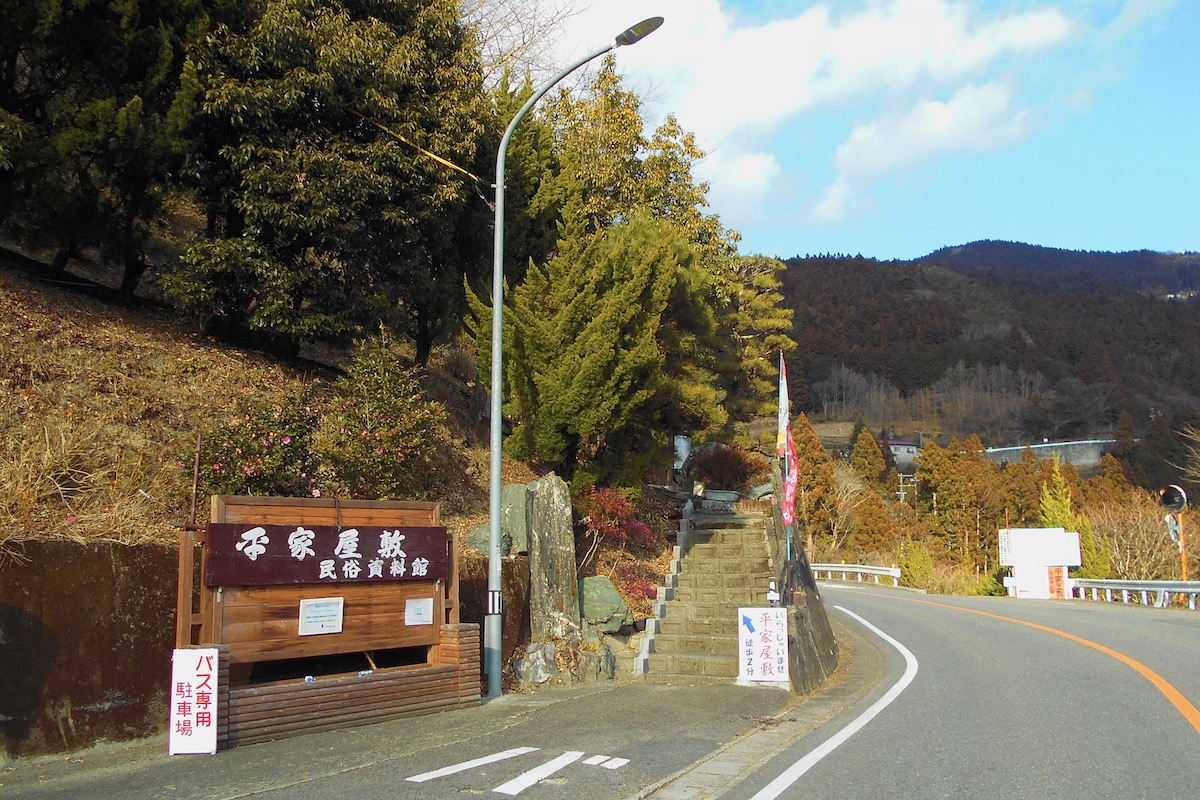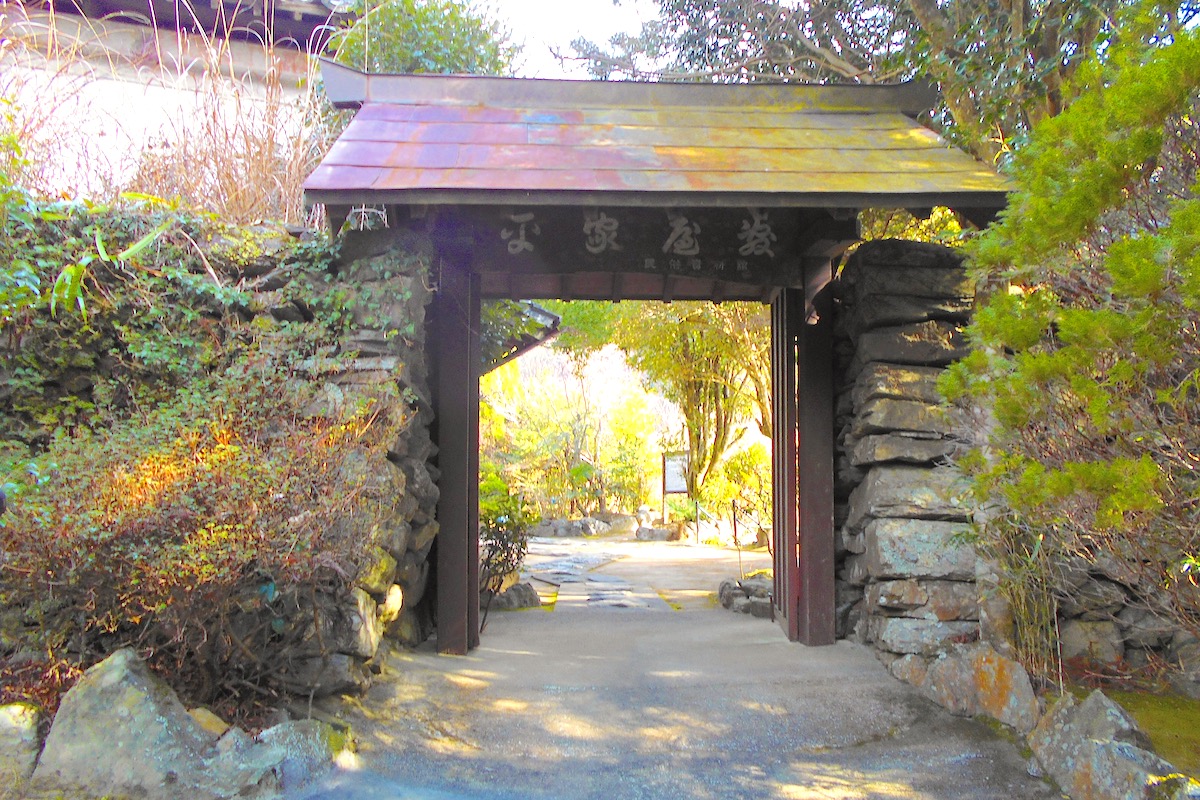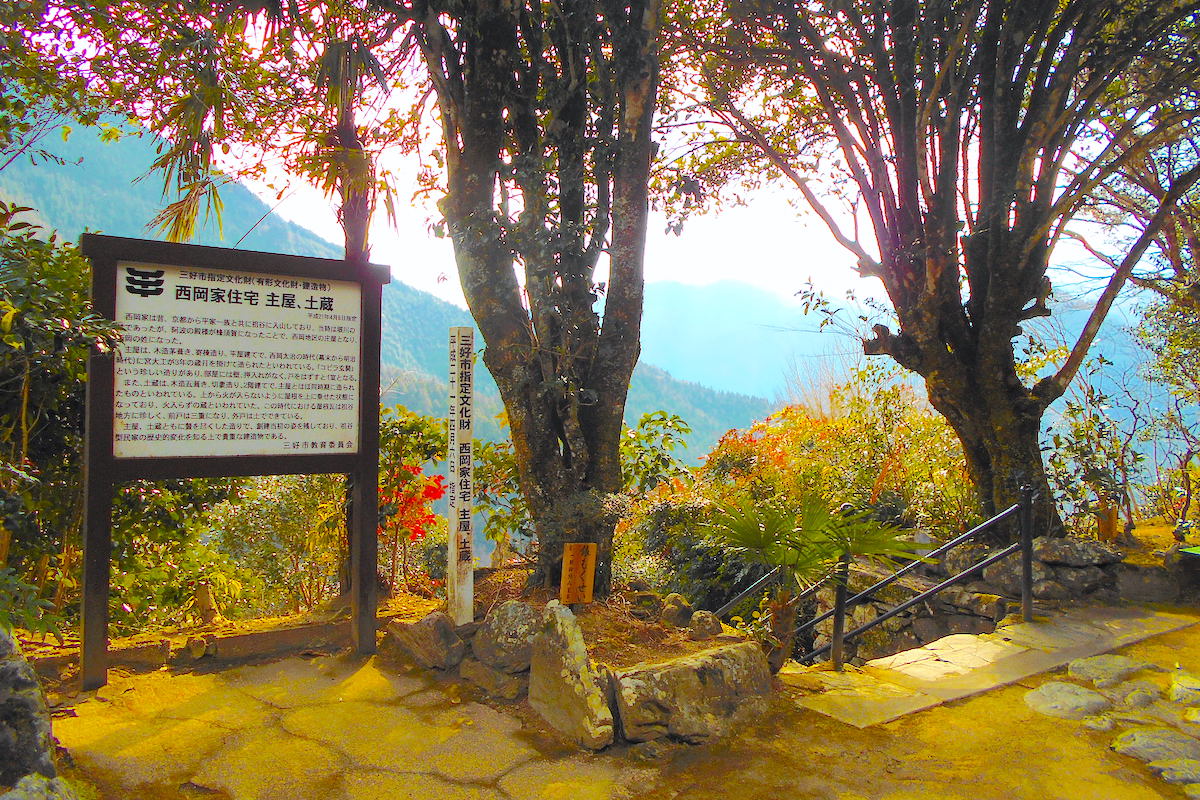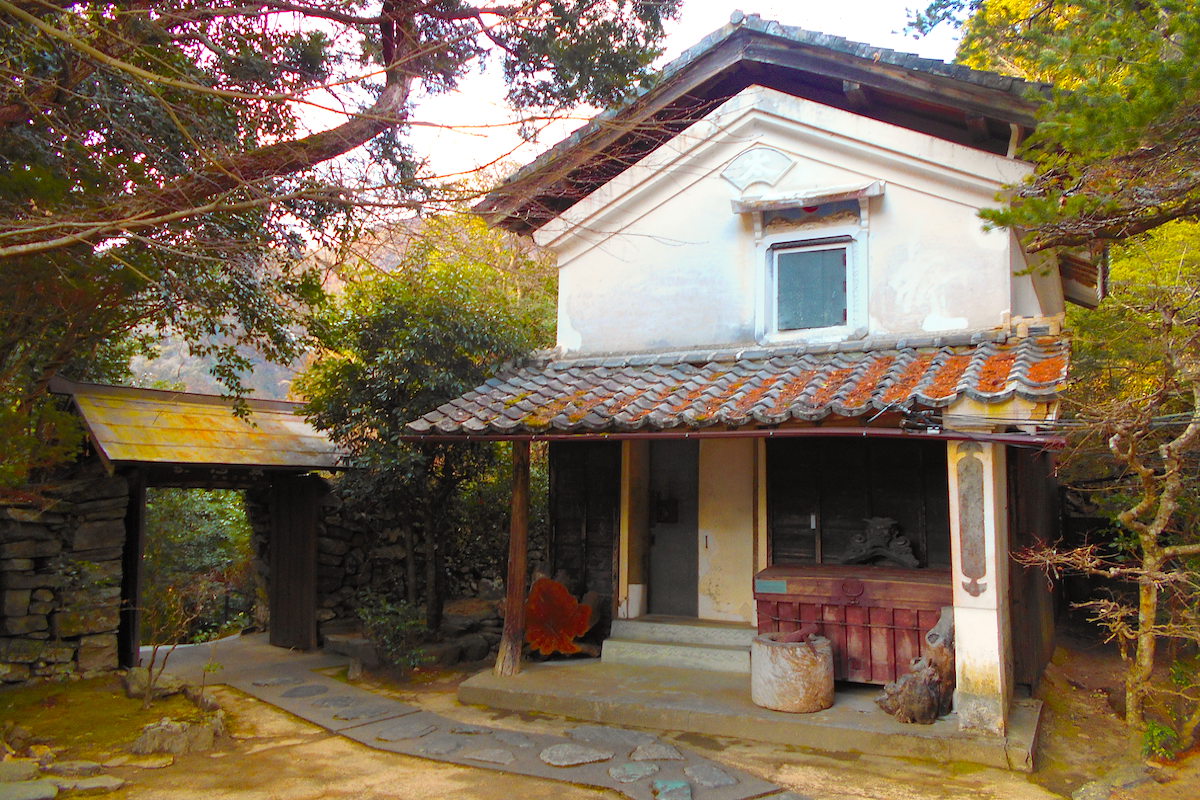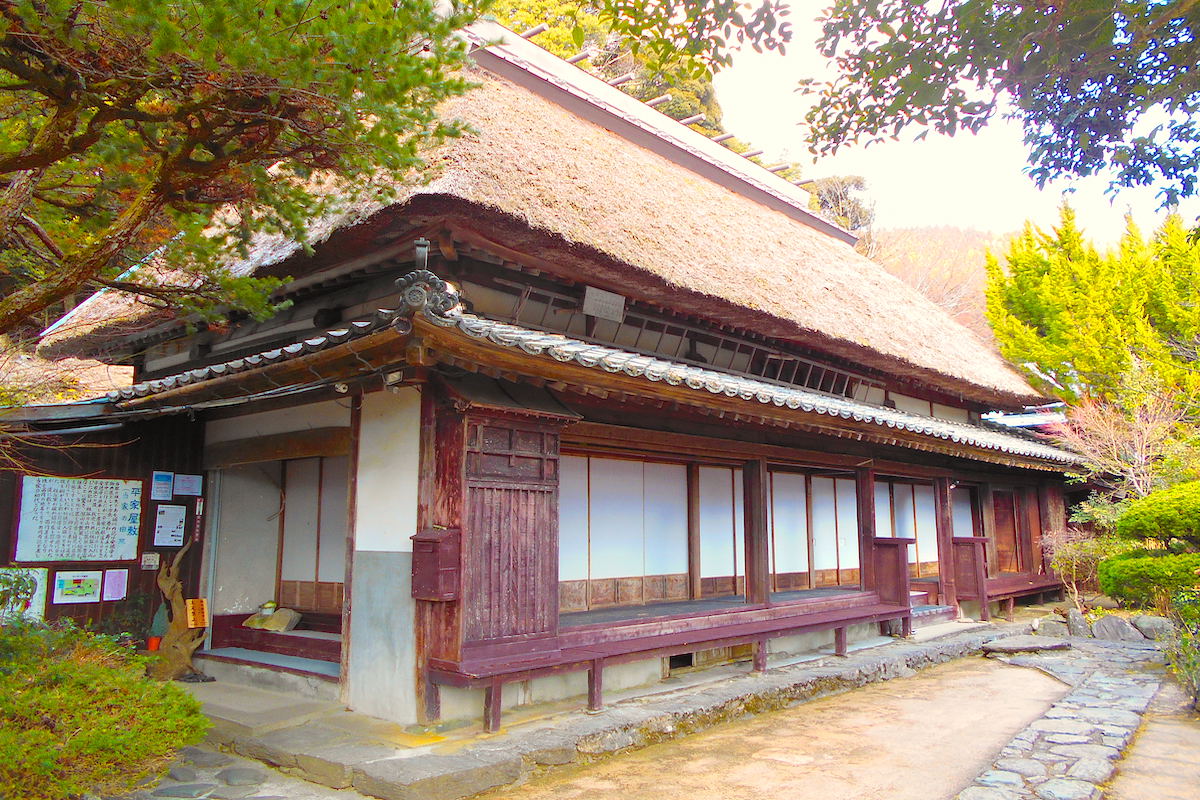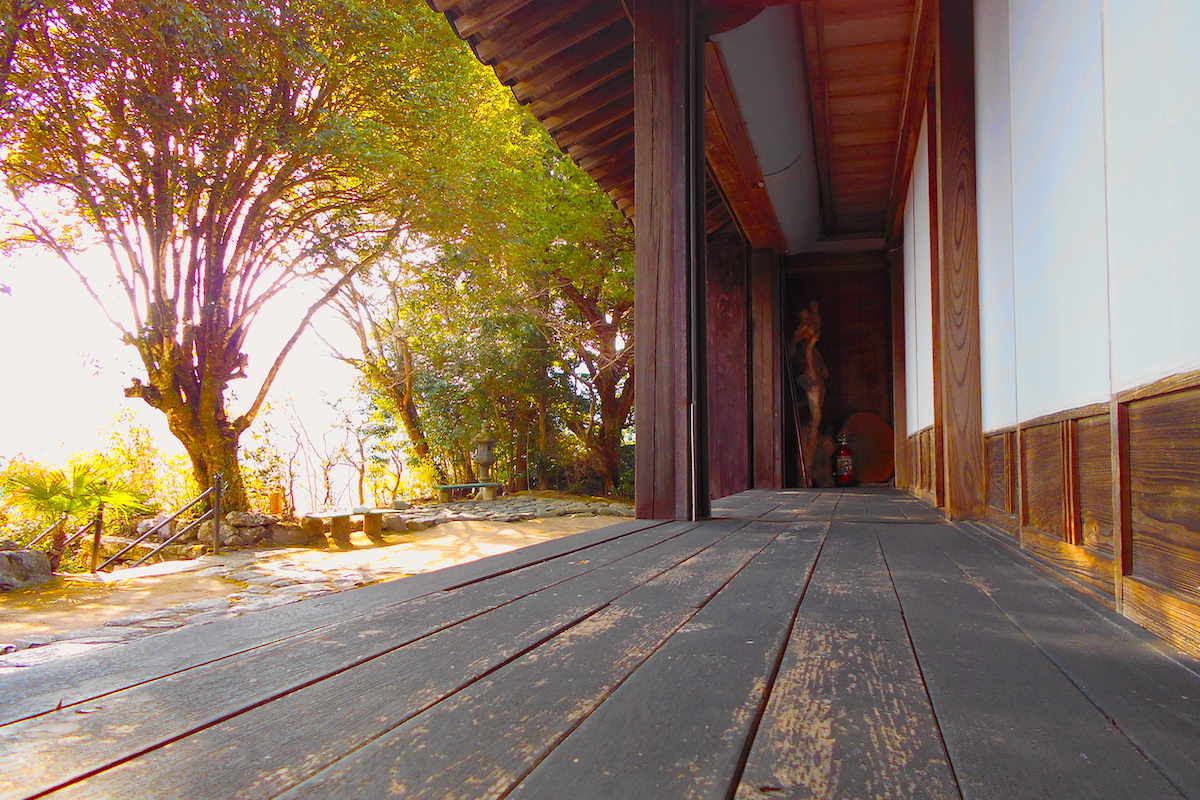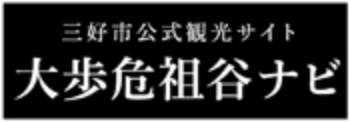Step Back in Time at the Heike Yashiki Folk Museum – Part 2
2022.03.08
The Iya Valley in Tokushima’s Miyoshi City is known for not just being a remote place, but it has long been considered a place to hide. Legends say that the defeated samurai warriors from the Heike Clan came to the valley 800 years ago in order to escape capture, and today the descendants of one of these fugitive Heike have converted their ancestral home into a dynamic museum.
The Heritage of the Heike
The Heike Yashiki Folk Museum is located in the Nishi-Iya (West Iya Valley) part of Miyoshi City, about a 10 minute drive up the mountain from JR Oboke Station on the way to central Nishi-Iya.
There is a bus stop on the road here, and for those who are driving, there is ample roadside parking as well. From here you can easily walk a short distance up the hill to the historic house. There are panoramic views looking out from here into the Oboke Gorge area, and it surely feels like you are deep in a hidden land.
At the ticket booth I was welcomed by the staff who explained the rich history of this lovely place and led me up the pathway to the main house.
Trees as Old as the Heike
On the way up to the house we passed by a large maple tree which is said to be about 800 years old, as well as a pair of giant fragrant olive trees (a gold-flower “kinmokusei” and a silver-flower “ginmokusei”) that are equally as ancient.
This makes the trees as old as the Heike story itself, and it is believed that they were planted by Dr. Horikawa when he settled here.
Though I visited out of season to see the flowers or maple leaves, the garden here in front of the main house was still a lovely with its stone lanterns and cobbled pathways, and the view into the valley was magnificent.
The Ancient Edo-era “Storage House”
Beside the main museum house was the family’s large white “kura” building.
In Japanese architecture, a “kura” is a unique type of building that is used to safely store the valuable treasures of a family, and it is usually made of stone and cement in order to be fire-proof. Accordingly, a kura is something only owned by a family of considerable wealth and status, and to my knowledge, this is one of the only still standing kuras in the Iya Valley area.
This particular kura was built in 1867, which was the final year of Japan’s Edo Period, and the stucco on the upper eaves were sculpted with the image of a rabbit, the moon, and waves of water, which together symbolize good luck while also acting as a talisman against fire.
A Place for Discovering Miyoshi’s Rich History
The main part of the museum is located inside the large thatched-roof home of the Nishioka family. The current house on this site was built together with the kura in 1867.
The main structural components of the building are similar to other traditional thatched roof homes in the Iya Valley, but there are some notable differences with the layout of this stately mansion.
One interesting difference is the formal side entrance to the building, which was done this way due to this being the home of a doctor and how having visitors would have been a rather common occurrence.
Along the front of the building is the long “engawa” front porch which overlooked the garden, and it is a pleasant place to sit, in the same way people have done for hundreds of years, and take in the timeless views.
In Part 3 we will go inside to discover some of the treasures that the Heike Yashiki Folk Museum holds.
For more information, check their website (in Japanese):
Or their Instagram:
https://www.instagram.com/heikeyashiki/
Or for English, check their listing on IyaTime
https://www.iyatime.com/heike-yashiki-folk-museum
(Text by: Shaun Lamzy, Photos by: Heike Yashiki Folk Museum & Shaun Lamzy)
Related Posts
-
Exploring Oboke Gorge – Part 2 | A Place for Food, Fun… and Monsters?!
The thrilling cliffs of Oboke Gorge are formed by the mighty Yoshino River as it cuts its way throug
2023.03.21
-
Exploring Oboke Gorge – Part 1 | A Natural Wonder of Miyoshi City
The mighty Yoshino River flows across much of Shikoku, and as it cuts its way through the rugged mou
2023.03.20
-
Iya Kanko Ryokan – Part 3 | Inheriting the Tastes of the Iya Valley
Just a few minute walk from the famed Kazurabashi Vine Bridge, the Iya Kanko Ryokan has been welcomi
2023.03.19
-
Iya Kanko Ryokan – Part 2 | A Family-Run Business Where Life is a Juggle
The Kazurabashi Vine Bridge is one of the most renowned sights of the Iya Valley, and just a couple
2023.03.18
-
Iya Kanko Ryokan – Part 1 | A Traditional Inn near the Kazurabashi Vine Bridge
Acclaimed as one of Japan’s Three Unusual Bridges, the Kazurabashi Vine Bridge is one of the most fa
2023.03.17
-
The Shikoku “Yukigassen” Snowball Fight – Part 2 | The Heat of the Battle in Icy Conditions
The 19th annual “Yukigassen” Snowball Fight Tournament was held recently in the deep mountains of Mi
2023.02.19










